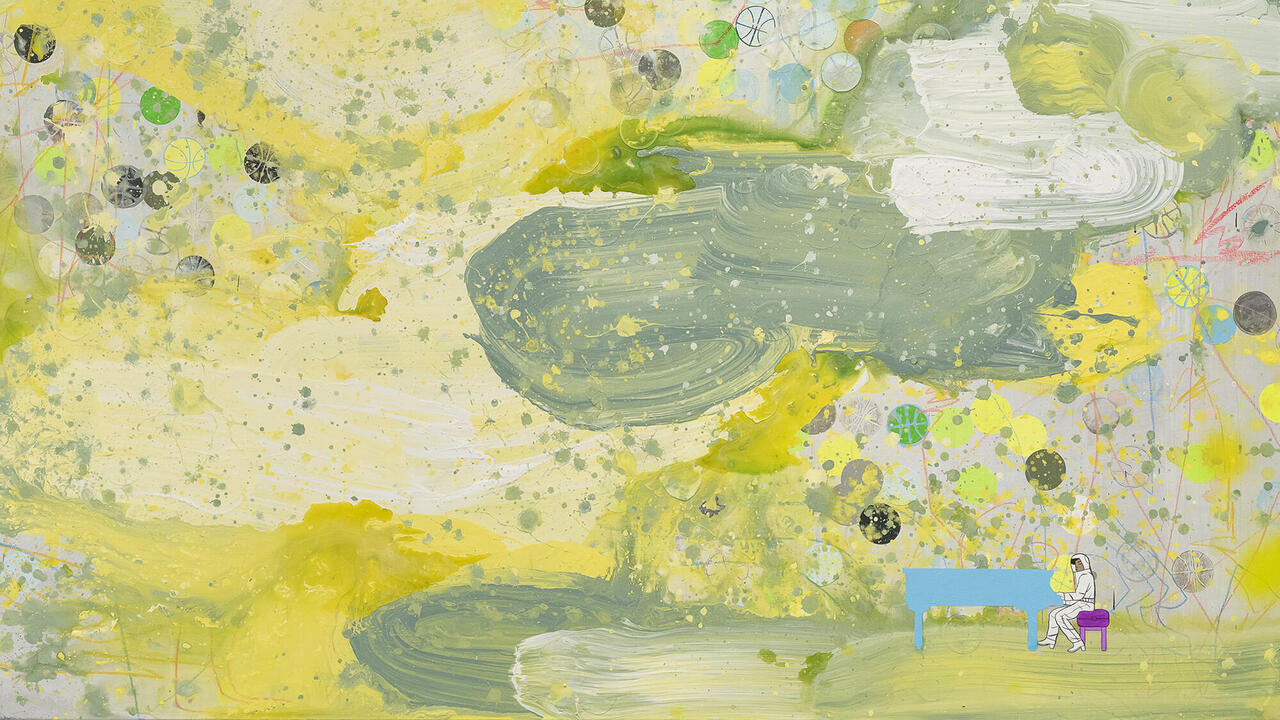Anne Hardy

The light in Anne Hardy’s photographs confounds rather than enlightens. Though the rooms she depicts surely existed, at least temporarily, it’s hard to say whether they’re dark interiors or bright surfaces, hallucinations or nearly improbable realities. But it is fitting that her latest exhibition takes place in the basement of Vienna’s Secession; like her rooms, these spaces are bunker-like, windowless and hermetic.
What Hardy does make plain is that her spaces are about the activities performed within them. While devoid of people, as well as any clear identifiable purpose, they are full of objects that yield myriad narratives, as fantastical as they are forensically futile. The possible inhabitants of these spaces are momentarily away, or perhaps have deserted the place altogether: a costume-party-goer leaves a mask hanging on the door, karaoke lounge singers are waiting to sing, gymnasts are out celebrating a win. Their traces and detritus are arranged meticulously, to the point of disbelief, so painterly is their composition. In fact, Hardy builds three to four such life-size sets per year in her studio from scratch, using mostly found objects, items from second-hand shops and likely a good party supply store.
In this exhibition, we are invited to peer into these rooms, which is easy enough to do: the large-format photos are mounted low on the gallery walls. Half the works might be still-lifes taken in empty nightclubs, with plenty of limp balloons, confetti and what might be bingo numbers (Incidence, 2009; Rehearsal, 2010; Notations, 2012). Other works depict spaces constructed to suggest obsessions that are rather private and specific. I hope never to cross the occupant of the room in Close Range (2006), a narrow space adorned with bulls-eyes – some large, some small, and many more hanging in stacks. The neon lighting in Cipher (2007) renders a weight-room as a site of holy rituals. In The Method/THE DETAILS (2012), groupings of single words clipped from newspapers appear to be an attempt to make sense of something, but have been aborted. Likewise Playback (2012) features words scrawled on a board, the last one circled, as if the searcher was somehow successful: ‘Pin / Point / Pain / Paint / Pint / PIT.’
What to make of these spaces? Hardy’s approach is similar to that of Jeff Wall’s in her conspicuous staging and suggestionof painting; like Thomas Demand’s works, her photos are recordings of built sculptures, but, in this case, without historical references.Her practice also recalls W.G. Sebald’s fiction – the untrustworthiness of his narrator and imagery, as well as his passages on the invisible spaces and layers of London. One can imagine the inhabitants of Hardy’s worlds existing in such undetected, overlooked places, after having appropriated them for their own use. In the catalogue accompanying the exhibition, Hardy includes excerpts from novels by J.G. Ballard and Tom McCarthy, as well as images from her own visual archive: the London Aquatic Centre in Woolwich,a postwar brick Modernist building; nondescript underground entrances to buildings; self-made gym weights consisting of concrete slabs, plastic twine grips padded with cotton puffs; the fish-tank window of Frank Lloyd Wright’s Taliesin West in Scottsdale, Arizona. Taken together, these texts and imagesconjure the psychological character of Hardy’s spaces. While her older works appear as composites of these architectures and objects, it is in her newer, flatter, works – which are more strictly defined and limited to single planes or fewer layers – that the images become almost an illusion of a photograph, or as Hardy puts it, a figment of your imagination. And perhaps this is what makes them so eerie: the suggestion that these spaces are coming to light for the first time.
















